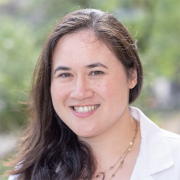Health Care Access & Coverage | Health Equity
Blog Post
Physician Groups in ACOs Don’t Avoid Vulnerable Patients
Reassuring results from large Medicare study
Accountable care organizations (ACOs) are the largest experiment in payment reforms, but the incentive structure may lead participating physician groups to select fewer vulnerable patients. In a new study in JAMA Network Open, my colleagues and I tested whether physician groups changed their proportions of black patients and patients with low socioeconomic status after joining the Medicare ACO, and found that – in general – they did not. These results are reassuring, although continued monitoring is needed.

is a Fellow in Penn’s Division of Pulmonary, Allergy, and Critical Care, an MSHP student, and an LDI Associate Fellow.
ACOs are networks of clinicians responsible for managing the cost and quality of care for a group of patients, with the goal of sharing in savings from improvement in both areas. The Medicare ACO program has been hailed a success amid reports of improved quality and some cases of reduced costs. But there has also been concern that ACOs may worsen existing disparities, at both a system and clinician level, with some evidence of selection in favor of healthier and lower cost patients. At a clinician level, the financial incentive structure of ACOs may lead physicians to avoid vulnerable patients after joining an ACO, a practice known as cream-skimming.
Our study, conducted with Daniel Polsky and Rachel Werner, found that physician groups in general did not reduce their share of vulnerable patients after joining a Medicare ACO. We studied more than 76,000 physician groups from 2010-2016, and 16% of these groups participated in a Medicare ACO after implementation of the program in 2012. We used a difference-in-differences approach to estimate changes in vulnerable patients within ACO-participating groups compared with nonparticipating groups, and found overall no changes in percentage of racial minorities and patients with low socioeconomic status. We found, however, small decreases in the share of patients dually enrolled in Medicare and Medicaid and in patients living in areas with higher poverty rates in subgroup analyses of small physician groups and primary care practices. The baseline descriptive data also showed that patients who went on to be in ACOs were less likely to be black or dually enrolled in Medicare and Medicaid, and lived in zip codes with lower poverty rates. This is consistent with prior research showing that ACOs more often form in areas with fewer black residents and lower rates of poverty.
While our findings are reassuring in terms of physician group practices, it remains an open question whether inclusion in ACOs translates to improved health outcomes in populations that have historically received worse care. Additionally, policy evaluators must remain vigilant for changes in behavior that would reduce access for vulnerable patient populations, given the small reductions of these patients observed in subgroups of small practices and primary care practices, as well as the increasing prevalence of ACO risk models that share financial losses in addition to savings.
The article, “Proportion of Racial Minority Patients and Patients With Low Socioeconomic Status Cared for by Physician Groups After Joining Accountable Care,” was published in JAMA Network Open on May 8, 2020. Authors include Jessica T. Lee, MD, MHS, Daniel Polsky, PhD, Robert Fitzsimmons, MS, and Rachel M. Werner, MD, PhD.